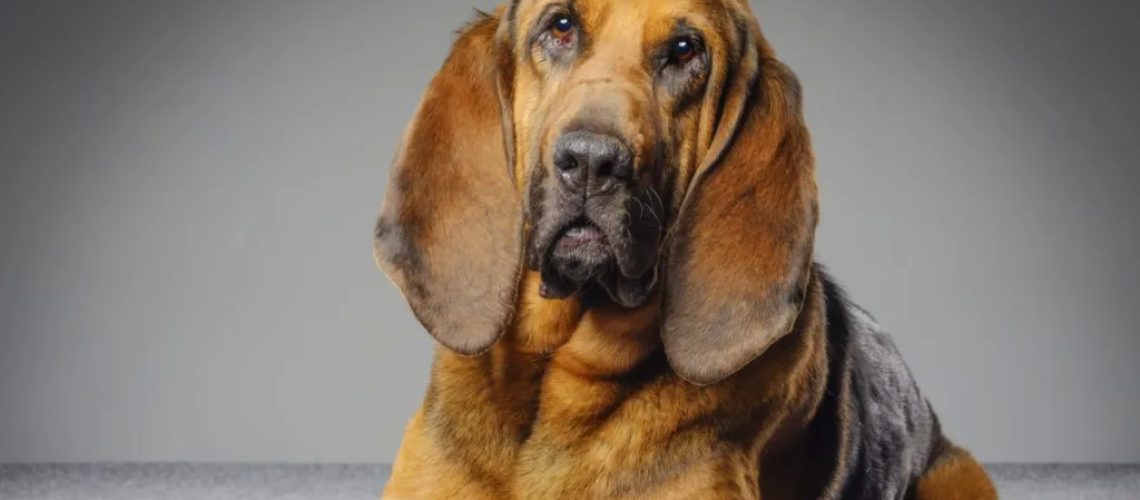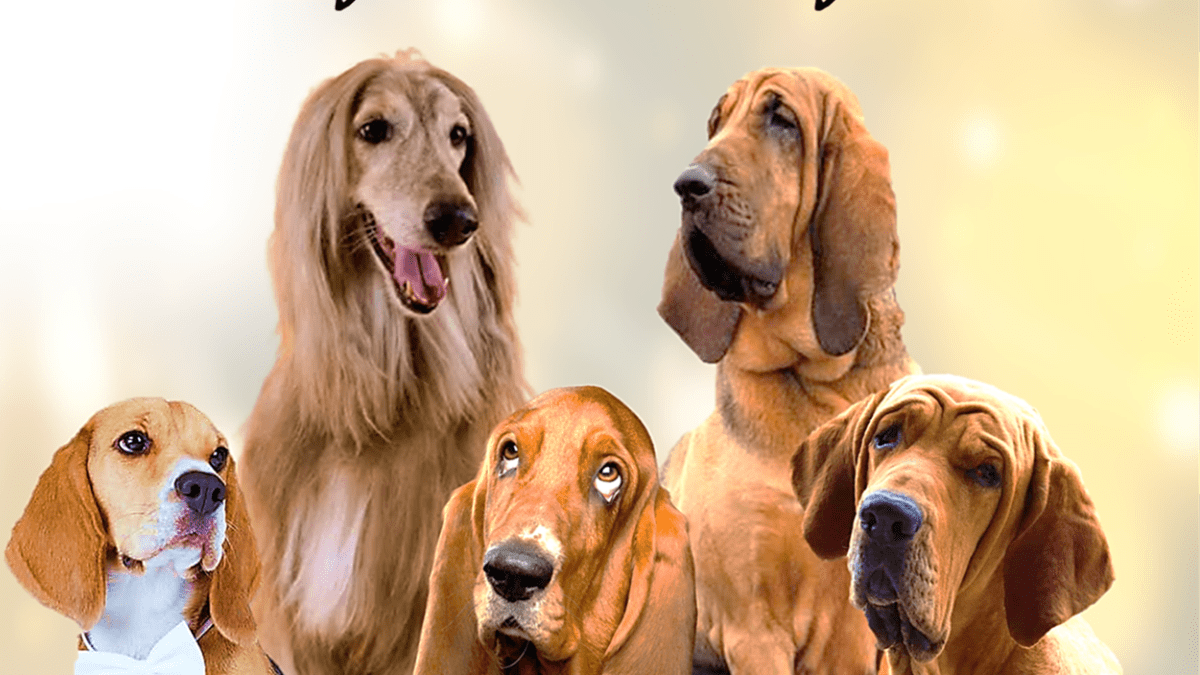Key Takeaways:
- Bloodhounds are known for their exceptional sense of smell, which makes them excellent tracking and search-and-rescue dogs.
- They have a calm and gentle temperament, making them great family pets, but they can be stubborn and require patient training.
- Due to their droopy ears and wrinkled skin, Bloodhounds are prone to certain health issues such as ear infections and skin irritations, so regular grooming is important.
- These dogs are large and active, requiring daily exercise to prevent obesity and keep them mentally stimulated.
- Bloodhounds have a tendency to follow scents without regard for commands or boundaries, so it's crucial to keep them on a leash or in a securely fenced area when outdoors.
Are you curious about the fascinating world of dog breeds? If so, you're in for a treat! Today, we're going to dive into the captivating realm of Bloodhounds. These incredible canines are known for their exceptional tracking abilities and lovable personalities. By understanding the characteristics and care required for this breed, you'll not only gain valuable insights into the world of dogs but also discover how to provide the best possible care for your furry friend. So, get ready to embark on an exciting journey filled with interesting facts and practical tips. Let's unleash the power of knowledge and unravel the secrets of Bloodhounds!
What is a Bloodhound and what are some key characteristics of this dog breed?
A Bloodhound is a large breed of dog known for its exceptional sense of smell. They have a long, wrinkled face and droopy ears that hang down to their shoulders. Bloodhounds also have loose skin, especially around their necks and jowls.
One key characteristic of Bloodhounds is their incredible tracking ability. They have one of the strongest noses among all dog breeds and can follow scents that are several days old. Their sense of smell is so powerful that they are often used by law enforcement agencies to track missing persons or criminals.
Bloodhound Characteristics:
- Size: Bloodhounds are large dogs, typically weighing between 80-110 pounds.
- Coat: They have short, dense coats that come in various colors, including black and tan, liver and tan, or red.
- Temperament: Bloodhounds are known for being gentle, affectionate, and good-natured dogs. They are usually friendly towards people and other animals.
- Exercise Needs: While they may look lazy due to their droopy appearance, Bloodhounds actually require regular exercise to keep them healthy and prevent obesity.
How does a Bloodhound's sense of smell compare to other dog breeds, and why are they often used for tracking scents?
A Bloodhound's sense of smell is considered one of the best among all dog breeds. Their olfactory receptors (the part responsible for smelling) are much more developed than in most other dogs. This allows them to pick up even the faintest scent trails left behind by humans or animals.
Bloodhounds are often used for tracking scents because of their exceptional ability to follow trails. They have been selectively bred for centuries to enhance their tracking skills. Their long ears and loose skin help to collect and concentrate scent particles, making it easier for them to detect and follow a specific scent.
Comparison to Other Dog Breeds:
While all dogs have a good sense of smell, Bloodhounds surpass most other breeds in this area. Here are some key differences:
- Bloodhounds have about 300 million scent receptors, while humans only have around 5 million.
- Their sense of smell is estimated to be up to 40 times stronger than that of humans.
- Bloodhounds can track scents that are several days old, whereas other breeds may struggle with older trails.
What kind of care does a Bloodhound require in terms of grooming, exercise, and overall health?
Bloodhounds require regular grooming to keep their coat healthy and free from mats. Their short hair should be brushed weekly to remove loose hair and prevent tangles. Additionally, their droopy ears need special attention as they are prone to infections. Cleaning their ears regularly with a veterinarian-recommended solution can help prevent issues.
Exercise is important for Bloodhounds to maintain a healthy weight and mental stimulation. They have moderate exercise needs and enjoy daily walks or playtime in a securely fenced yard. However, it's important not to overexert them due to their large size and potential joint issues.
In terms of overall health, Bloodhounds are generally a robust breed but are prone to certain conditions such as hip dysplasia and bloat. Regular veterinary check-ups, vaccinations, and preventive measures like heartworm medication are crucial for their well-being. Providing them with a balanced diet tailored to their specific needs is also essential for maintaining optimal health.
Grooming:
- Brush the coat weekly to remove loose hair.
- Clean the droopy ears regularly using a veterinarian-recommended solution.
- Trim the nails regularly to avoid discomfort while walking.
Exercise:
- Take them for daily walks or playtime in a securely fenced yard.
- Avoid overexertion due to their large size and potential joint issues.
- Engage them in mentally stimulating activities like puzzle toys.
Overall Health:
- Schedule regular veterinary check-ups for vaccinations and preventive care.
- Provide them with a balanced diet tailored to their specific needs.
- Be aware of common health issues such as hip dysplasia and bloat.
Can you explain why Bloodhounds have droopy ears and loose skin, and how these physical traits help them with their tracking abilities?
Bloodhounds are known for their distinctive droopy ears and loose skin. These physical traits serve a purpose in enhancing their tracking abilities. The long, pendulous ears of Bloodhounds help to trap scents and direct them towards their nose. As they track scents on the ground, their ears sweep along, collecting and funneling smells towards their highly sensitive olfactory system.
The loose skin of Bloodhounds also plays a crucial role in their tracking skills. When they are on the scent trail, the folds of loose skin around their face and neck help to capture and retain scent particles that would otherwise be lost in the air. This allows Bloodhounds to effectively follow even the faintest of scents over long distances.
Droopy Ears:
The long, droopy ears of Bloodhounds help trap scents and direct them towards their nose.
Loose Skin:
The loose skin around the face and neck captures and retains scent particles, aiding in tracking abilities.
Are Bloodhounds known to be good family pets, and what are some important considerations for potential owners before getting this breed?
Bloodhounds can make excellent family pets for those who understand and appreciate their unique characteristics. They are known for being gentle, affectionate, and patient with children. Their calm nature makes them suitable companions for families with older kids who can handle their large size.
However, there are important considerations potential owners should keep in mind before getting a Bloodhound. Firstly, they have a strong instinct to follow scents which can lead to wandering if not properly trained or contained within a secure area. A sturdy fence is essential to prevent them from roaming off.
Additionally, Bloodhounds are known for their loud baying howl which may not be suitable for noise-sensitive environments or close neighbors. Regular exercise and mental stimulation are also crucial to prevent boredom, as they can become destructive if not given enough activity.
Family Compatibility:
Bloodhounds can be good family pets, especially for families with older children who can handle their large size.
Important Considerations:
- Bloodhounds have a strong instinct to follow scents and may wander if not properly trained or contained.
- Their loud baying howl may not be suitable for noise-sensitive environments or close neighbors.
- Regular exercise and mental stimulation are necessary to prevent boredom and destructive behavior.
What are some common behavioral traits or challenges that Bloodhounds may exhibit, and how can owners address them effectively?
Bloodhounds have some distinct behavioral traits that potential owners should be aware of. They are known for being independent thinkers, which can make training a bit challenging. Consistency, positive reinforcement, and patience are key when it comes to training a Bloodhound. Using rewards-based techniques and keeping training sessions short but frequent can yield the best results.
Another common challenge with Bloodhounds is their tendency to drool excessively. This is due to their loose jowls and deep facial folds. Keeping a towel handy and regularly wiping their mouth can help manage the drooling.
Additionally, Bloodhounds have a strong sense of smell which can lead them to follow scents without paying attention to commands. It's important for owners to keep them on a leash or within a secure area when outside the home. Providing mental stimulation through scent games or puzzle toys can also help redirect their focus in a controlled manner.
Training:
- Use consistent training methods with positive reinforcement.
- Keep training sessions short but frequent for better results.
- Be patient with their independent thinking nature.
Drooling Management:
- Keep a towel handy for wiping their mouth regularly.
- Use elevated food and water bowls to minimize drooling.
Scent Distraction:
- Keep Bloodhounds on a leash or within a secure area when outside the home.
- Provide mental stimulation through scent games or puzzle toys.
Can you describe any famous Bloodhounds throughout history or in popular culture, and what makes them notable?
One famous Bloodhound from history is "Nick Carter," who was known for his exceptional tracking skills. Nick Carter was instrumental in solving numerous criminal cases during the late 19th century. His ability to track scents over long distances and find missing persons made him highly respected in law enforcement circles.
In popular culture, another notable Bloodhound is "Copper" from Disney's animated film "The Fox and the Hound." Copper is portrayed as a loyal and brave companion to the main character, Tod. The film showcases the breed's tracking abilities and their strong bond with humans.
These famous Bloodhounds highlight the breed's remarkable tracking instincts and loyalty, making them memorable figures in both real-life crime-solving and fictional storytelling.
Nick Carter:
Nick Carter was a famous Bloodhound known for his exceptional tracking skills in solving criminal cases during the late 19th century.
Copper from "The Fox and the Hound":
Copper is a notable Bloodhound character from Disney's animated film, showcasing their tracking abilities and loyalty.
In conclusion, the Bloodhound is a large and gentle dog breed known for its exceptional tracking abilities. They require regular exercise, grooming, and attention to their health needs to ensure a happy and healthy life as a pet.
Are Bloodhounds high maintenance?
On the other hand, owning these dogs requires significant time and dedication from their owners in order for them to reach their full potential. If you believe that the Bloodhound is the right choice for you, it is important to conduct thorough research and make necessary preparations to provide the proper care that these dogs need.
Are Bloodhounds good house dogs?
Acquiring a Bloodhound can be a challenge due to their independent nature, but they are also affectionate and enjoy being part of the household. They make excellent family pets if you are able to devote the necessary time and energy to their care.
Are Bloodhounds hard to take care of?
The Bloodhound is generally a fantastic pet for families, as they have many desirable qualities such as being gentle and affectionate. While they do need regular exercise to remain content, they also know how to relax and be lazy when spending time with their family.
Do Bloodhounds like to cuddle?
Bloodhounds are known for their calm, gentle, and balanced temperament. They are friendly and show a lot of affection towards their human family members. When they are not engaged in work, they enjoy relaxing and cuddling. However, they become alert and active as soon as they catch a scent to follow.
Are Bloodhounds good for seniors?
In contrast to certain other big dog breeds, bloodhounds have a relatively short average lifespan of 10-12 years. This means that in certain instances, older individuals who own bloodhounds may live many years beyond the lifespan of their beloved companions.
What problems do Bloodhounds have?
Bloodhounds may experience certain health issues that should be taken into consideration, including hip and elbow dysplasia, heart problems, eye issues like persistent pupillary membranes and cataracts, as well as patellar luxation.

















